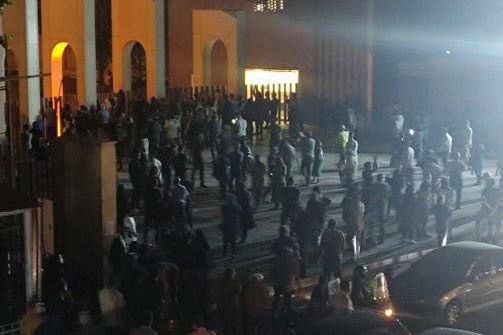Iran Finds Ways To Circumvent US Technology Sanctions

“You told me something I didn’t know about,” said Senator Todd Young (R) as he was jogging towards the US Senate building last month.

“You told me something I didn’t know about,” said Senator Todd Young (R) as he was jogging towards the US Senate building last month.
I had asked him about American-made electronic components found in Iranian drones used by Russia. “Please share the link with my press secretary,” said the Senator. I did share the link and I was less surprised that Young, who is the champion of export control and technology theft and procurement by US adversaries like China, admitted he did not know if and how the Islamic Republic obtained those American made electronics.
It’s a cat and mouse game and the US government has been chasing Iran for years, if not decades.
Sanctions only work if you know the trade route, the methodologies for financial transactions between the parties involved and how often and how tight those sanctions are being enforced. In the case of the Islamic Republic, its military procurement program has permeated every continent in the globe. The Islamic republic is good at cheating the system and they tap into the international network of smugglers, spies and black-market profiteers.
Periodically, the US imposes sanctions on individuals and companies but the cat and mouse game goes on.
Tehran offer good money for weapons procurement at Iranian people’s expense, which could be spent on schools, shelters and food. Instead, they fill the pockets of criminals around the world.
Popular Mechanics published a podcast recently titled: The secret war to take out Iran’s fleet of F-14s quoting a US prosecutor on the specific and curious case of a Pakistani citizen called Arif Dourani who purchased F-14 parts for Iran for many years.

He set up a restaurant in Mexico near the US border, hired American companies to find parts and refurbish them. Some of those companies were established by former US government employees including a retired US Department of Defense intelligence officer. They found parts for Dourani through auctions held by US military surplus and then sent the parts to Iran through different countries.
Iran continued to purchase F14 parts indirectly from the US military even after the US government sanctioned it. Former US prosecutor, William Cole, told Popular Mechanics that Dourani has made twenty-fold profits on his sales to Iran, paid by the Iranian people.
The case of Iran’s F-14s became so embarrassing for the US military that in 2005 they retired the entire fleet and, just to make sure that Iranians can never get their hands on their parts, they decided to shred their F14s into pieces. But as of 2023, Iran is still flying them, albeit in a precarious state.
In the case of American made electronics used in Iranian drones, it is one thing to purchase parts, it is totally another thing to be able to put parts made from different companies together and make it actually work.
This brings us to the second asset that the regime in Iran is exploiting: The abilities and know-how of Iranian engineers, specifically those who studied at Sharif University, Tehran Polytechnic, Isfahan university of technology and the university of science and technology (Elm va Sanat Tehran), which according to UK based QS university rankings, are among the top 200 universities in electronics in the world.

Iranian people are smart, and they have a history of reverse engineering products and mixing and matching components from different vendors. Anyone who has ever visited Paytakht Mall in Tehran which used to be one of the centers to purchase home computers, knows that due to sanctions, Western companies did not sell to Iranian companies, so the skillful merchants learned to purchase components from Malaysia or Singapore and learned to put together systems tailored to customer needs for reasonable prices. Instead of spending a fortune on DELL or COMPAQ, they would find you a processor that matched a motherboard with another sound card and VGA from three different vendors. You had a home computer that scored as high if not higher than the original home computers! If merchants in Paytakht mall can get around US sanctions like that, so can the IRGC.
US sanctions might deprive the Islamic Republic of military grade technology, but the regime has learned the value of dual use civilian technologies. Iran does not have a military industrial complex and companies that can rival Northorp Grumman, Lockheed Martin or General Dynamics but, throw money at experiments with civilian technologies that students in top universities have access to and you might be surprised to learn the extent of human innovation at your own peril.
Iran’s Joint Chief of Staff’s interview with Isca News last year includes some revealing anecdotes about how Iran developed its first generation of drones in 1983. He said: “Student volunteers from Sharif and Isfahan universitiesbrought a toy plane bought as a present for a child and then they mounted a camera on it. "According to analysis published by Institute for science and international security, most of the electronics used in Shahed drones used by Russia in Ukraine are off the shelf components. Shahid drones are running with internal combustion engines but students at Sharif university developed hybrid electric drones several years ago.
The US government doesn't seem to know much about how these components have found their way into Iran, nor US-based producers of these components. Hence, the creation of a task force at the behest of the White House to investigate. Perhaps the task force can identify the methodology for the IRGC to obtain these parts, some of which are sold online. Even if they do, as an old Persian saying goes: The bed is wet, and the baby is gone!